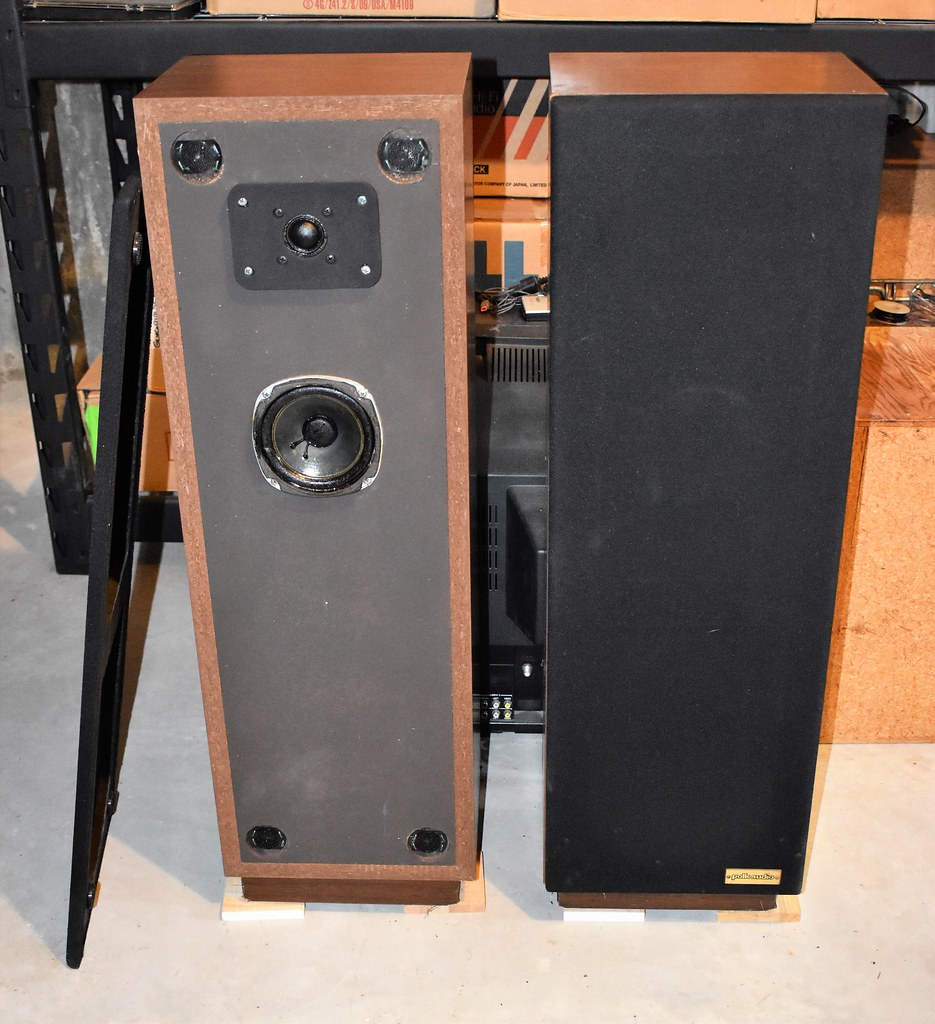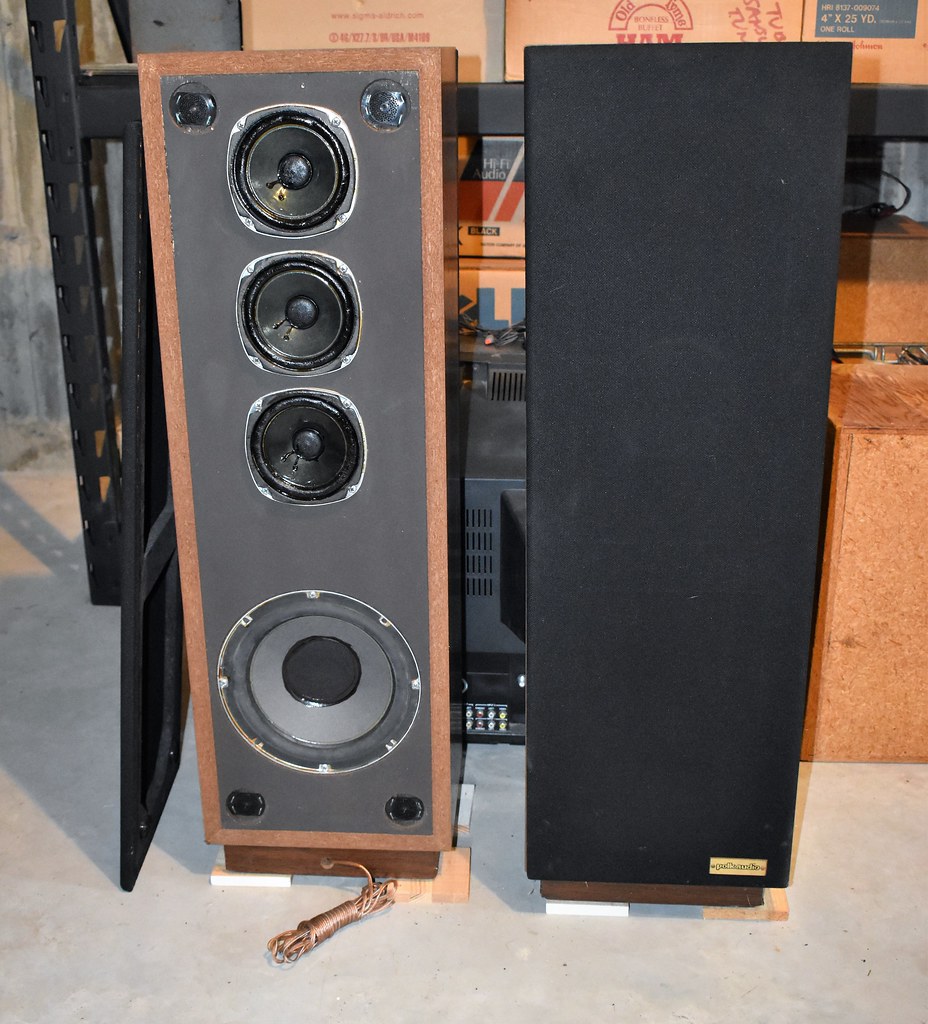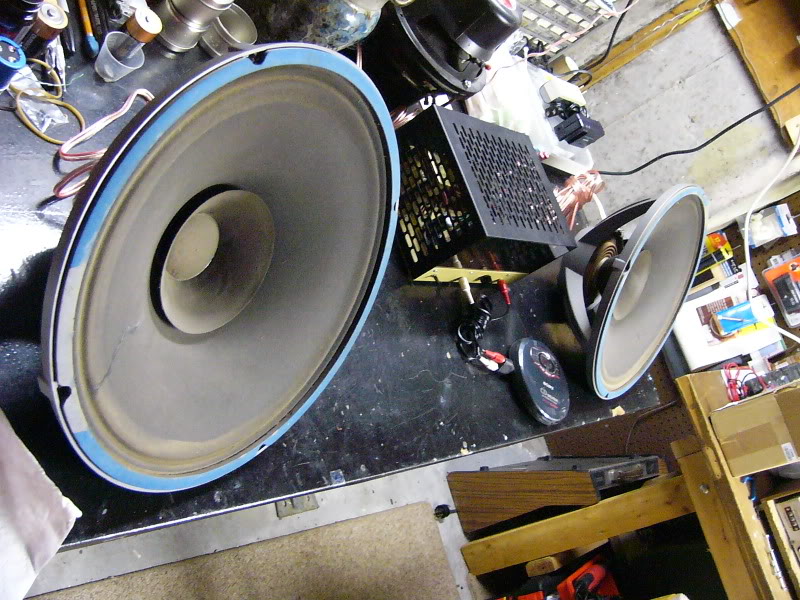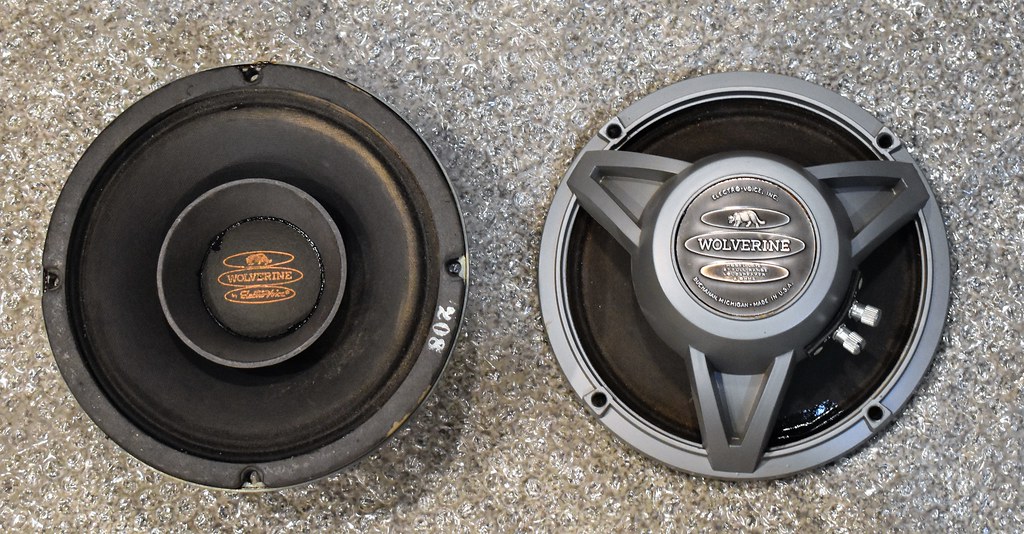So... many years ago (early 1970s), a young Johns Hopkins University graduate, Matthew Polk, and a couple of his buddies set out to build some Bose 901 clones (known as the "Bozos") for fun and profit. Bose Corp. -- rather predictably -- suggested none too gently that they'd prefer Polk
et al. to consider other avenues.

Faced with a fairly large quantity of CTS 4-1/2 inch "fullrange" (extended range) drivers, and a yen to make money umm, I mean, loudspeakers -- and being smart guys (JHU grads

), our intrepid heroes set out do design a domestic loudspeaker product!
For whatever reason, they decided to go with a
crossoverless design, still somewhat Bose-esque, but with a different approact than that employed by the folks on The Mountain in Framingham, MA to improve HF and LF extention. Bose used electronic EQ. Polk
et al. used a passive radiator (rather than the then fashionable acoustic suspension alignment) and a piezoelectric tweeter. The former, of course, is "just" a different way of implementing a Helmholtz resonator (bass reflex alignment), and the latter, which is essentially a capacitor that vibrates a paper diaphragm, essentially serves as its own crossover (ca. 4 kHz). Oh, and they went with a dipole (or is it bipole? I don't know...) design to use as many of those CTS drivers as possible (four per loudspeaker). Thus was born Polk Audio's first commercial product -- the Model Nine.

Polk's literature of the time touted the "crossoverless design" and high sensitivity of the Model Nine.

You can find the complete original brochure at:
I can tell you empirically that a pair were installed at the student pub (the drinking age for beer & wine in Maryland in those days was
eighteen) at JHU when I matriculated there (1976), and they served gamely for at least several years in the mid to late '70s, providing background music at times when there was no live band.
They were... pretty terrible.

Polk & co. then developed the Model 7 and went on to a not-inconsiderable amount of success.

Postscript: At some point, Polk actually improved the Model Nine by adding a proper tweeter (Audax silk dome) and crossover, re-christening them the Monitor Series Model 9A. I actually have a pair of 9As, and they're not bad at all.

(front)

(rear)














